Saturday, June 5, 2010
Temporary Switch
Sunday, June 28, 2009
Connecting the Dots
In Boston specifically, the North and South Stations are not connected but a run through would likely make the system more efficient in my eyes. It would allow those on the North a one seat ride to places of work in the South and vise versa. Think about the way the Septa system does it, running trains through downtown to the other side of the city, all connecting at the central station.
As for San Francisco, it would be nice to see the second tube, where Caltrain could go to somewhere like Richmond and Martinez directly. Anyway, it's an interesting thought. But it also brings up a point that Paz made on the issue of sprawl and commuter rail. Though in my opinion, this is an issue of neighborhood design, such that people can walk to the grocery store, elementary school and other activities.
Thursday, June 18, 2009
Consummate Salesmen
There is no other solution for American cities. If you look across the globe, the only cities that have actually shifted people from private cars back into public transit are cities that have built bus rapid transit.The BS detector is huge on this one. Not only is Curitiba losing people to private vehicles because of the crush loaded conditions, the chief of the system has admitted they have to build a subway. Might I also add, there are many cities that aren't in third world countries that have amazing transit systems to emulate. Such as Paris, Berlin, Vienna, London, and Madrid etc....(H/T Frank M) How about a yellow tram that's six segments and comes every minute like in Budapest?
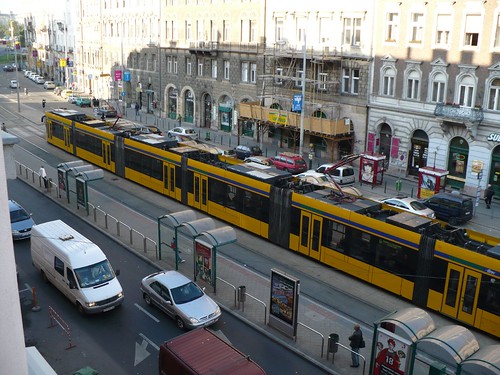
There's way more capacity there than on an articulated bus. 173 feet of tram every minute. And it would certainly do some heavy hauling across Manhattan. Anyone want to take some civic leaders to Budapest with me? As Daneel states:
The big order was for the world's busiest tram line, along the Grand Boulevard (lines 4/6). This is nothing to be proud of, the daily 200,000/hourly max. 10,500 passengers would be in the capacity range of a subway. But an orbital subway was never built, so pairs of "Industrial Articulateds" transport the masses in close succession. So when finally new vehicles were ordered, they were for the world's longest passenger trams (precisely 53.99 m; only the CarGoTram freight trams in Dresden/Germany are longer [59.4 m]). The new series 2000II got the nickname Óriáshernyó (=giant caterpillar).
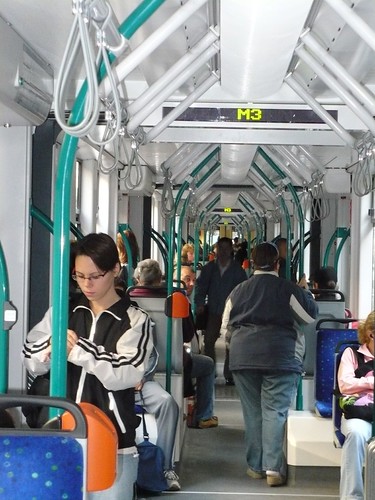
But another quip I have with Walter is his flip flopping and misleading statements. In his BRT post on Streetsblog, Hook nonchalantly states that BRT can cost as little as $8 million a mile.
Very good BRT systems have been built for as little as $8 million a mile. With the same capital budget, we could build more than twice as much proper BRT as light rail, probably 5 to 10 times more, with no loss in the quality of service, the capacity, or the speed.First off he's comparing cheap non-BRT Rapid bus to full LRT. That is hardly an even comparison. The Healthline BRT in Cleveland which is the closest thing we have to that type of BRT on city streets in the United States was $29 million per mile ($200/6.8mi). The Portland Streetcar cost $24m/mi. If we just took lanes from cars and inserted the rails instead of rebuilding whole streets the capital costs would be comparable and operating would be much less. More riders, less drivers.
Look, if you want a big network of Rapid Bus or BRT in a major city go ahead and do it. Los Angeles has been fairly successful when they aren't trying to expand like Krispy Kreme in 2000. That is an excellent model to emulate for routes that need better transit service right away. But let's not pretend that BRT or Rapid Bus works on the corridors that actually need rail or a Subway like Second Street.
Finally, there is this:
Hook is hoping it works. He says at least one American city should have a well-designed BRT, one that really does feel like a train.If you want something that feels like a train, then why not build a train. I'll never understand why cheap is always the best option to some people. You get what you pay for.
Thursday, April 16, 2009
Combino Cracks
On March 12, 2004, Siemens admitted to problems concerning the stability of the car bodies and, as a precautionary measure, instructed all public transportation services to take all Combinos with a service distance of more than 120,000 kilometres (74,565 mi) out of service. Torsion forces generated in S-curves were much higher than anticipated, leading to cracks around the articulations between the car modules. Subsequently, hairline cracks were found in the joints of the aluminium bodies, which could cause the roof to collapse in the case of an accident.The Caterpillars of Budapest had issues and were delayed due to door issues in 06. While not as bad as the issues the European versions had, Melbourne is going to make fixes due to the fractures that have occurred on their trainsets. I've heard that subsequent redesigns have fixed the problem on the current model.
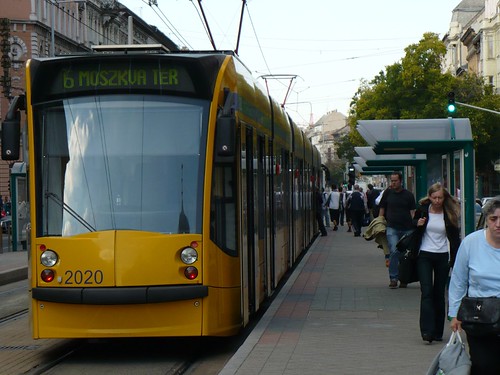
Wednesday, January 21, 2009
One Million Riders
 At the same time, Ryan notes that this super ridership record should make the region think about increasing core capacity with new subway lines and streetcars. I tend to agree. More core capacity can only increase mobility and perhaps let out a bit of a relief valve. Other cities such as Budapest are still building core lines in the central city (like line 4, line 5), we should be doing that as well.
At the same time, Ryan notes that this super ridership record should make the region think about increasing core capacity with new subway lines and streetcars. I tend to agree. More core capacity can only increase mobility and perhaps let out a bit of a relief valve. Other cities such as Budapest are still building core lines in the central city (like line 4, line 5), we should be doing that as well.
Sunday, January 4, 2009
Who Knew...
Prague:
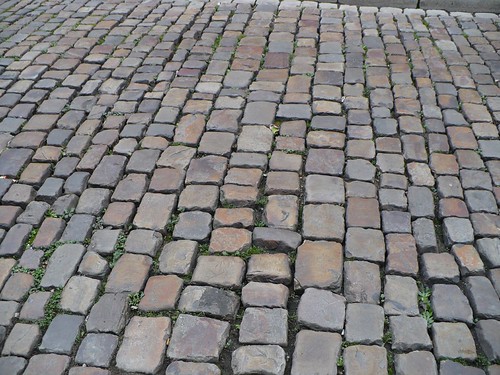
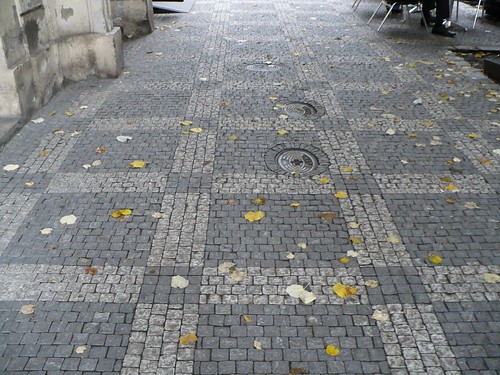

Vienna Woonerf
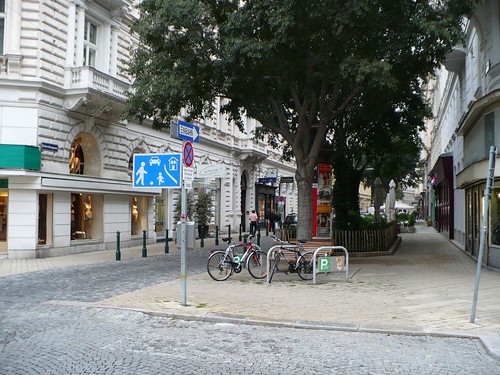
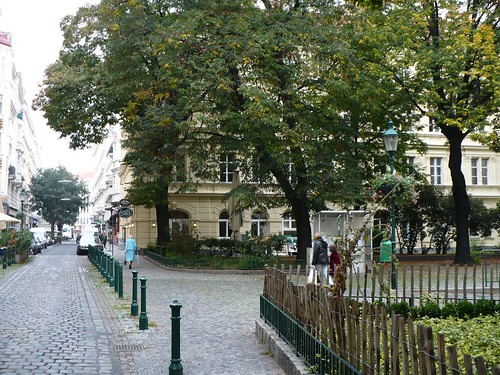
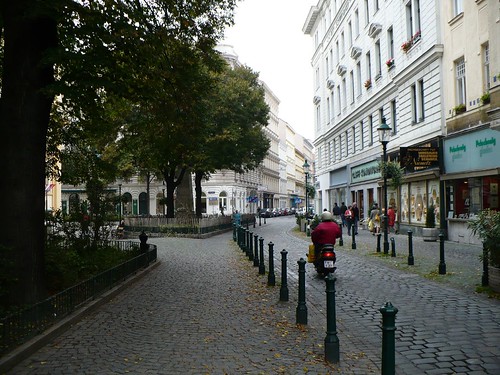
Budapest Pavers


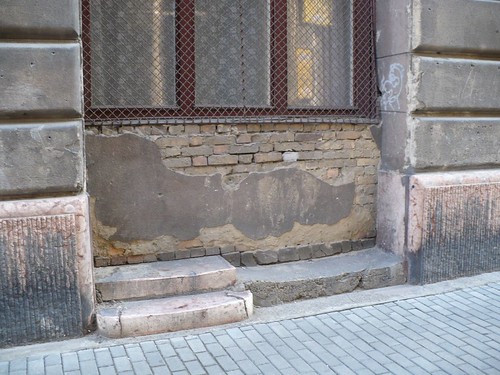
Why does this matter for transit? Well transit users are pedestrians before and after they use the train. It's important to focus on the complete movement from place to place.
Tuesday, July 29, 2008
Budapest Trams
Tuesday, April 29, 2008
Road Networks Grow Like Leaves
The researchers developed a simple mathematical model that can recreate the characteristic leaf-like patterns that develop, growing a road network from scratch as it would in reality.
The main influence on the simulated network as it grows is the need to efficiently connect new areas to the existing road network – a process they call "local optimisation". They say the road patterns in cities evolve thanks to similar local efforts, as people try to connect houses, businesses and other infrastructures to existing roads.

This is important for transit. The reason being that roads have evolved over hundreds of years often one street at a time. But we always get hammered when one transit line doesn't cure all of the region's ills. The reason being that we're providing core arterial service and depend on the smaller connections to be made by foot, bike, and car. In cities such as New York where the transit system starts to mimic the road network do we see how transit can help everyone with affordability, mobility, and energy independence. I wish folks would realize you have to start small, and grow to a network.

Tuesday, March 25, 2008
Sprawl and Regeneration in Budapest
The main culprit? American style suburbs. Never would have guessed."We've exchanged [Victorian-era] London-type smog for Los Angles-type smog," laments Janos Zlinszky of the Regional Environmental Center for Central and Eastern Europe. "The nature of our environmental problems is shifting."
Across east-central Europe, a region once blighted by Communist-era pollution, economic development is bringing on a new set of environmental problems and, in some cases, bringing back old ones.
Budapest's worsening air pollution is due in large part to the advent of American-style suburban housing developments and shopping centers, according to Andras Lukacs, president of the Clean Air Action Group. "Several hundred thousand people have moved out of central Budapest and gone to these new so-called residential parks in what used to be green areas," he says. "Each day they come back to their jobs here, but because public transportation isn't so good out there, they take their cars."But public transit is awesome in the city. They are building two new subway lines in addition to the three they have already. During communism, the transit share was 80% but that system came with a heavy price including an underinvestment in all infrastructure. Many buildings are falling apart and have to have some really hefty scaffolding. Here is a photo I took of the big box sprawl. It was noticeable on the train so I took a shot. The photo below the sprawl is some building scaffolding that keeps building pieces from falling while they are repairing it.
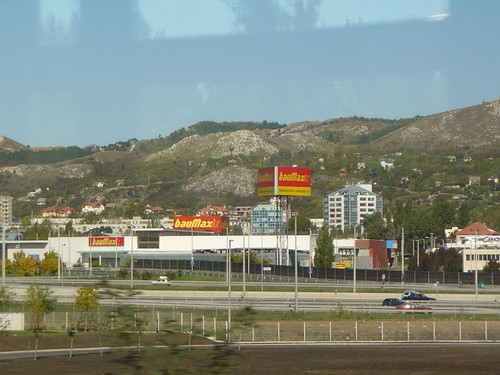
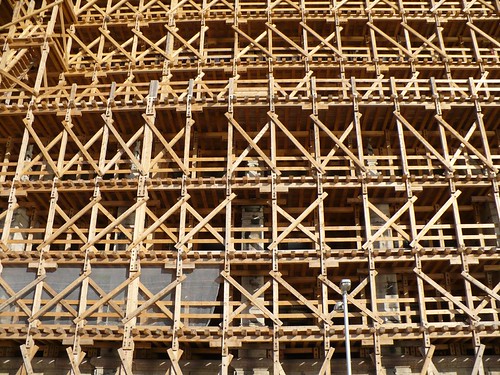
Tuesday, January 22, 2008
LRT Vehicle Design Elements
Visual Appearance:
Whether its a Porche designed tram from Skoda to one of the older PCC's that used to run in most american cities, appearance has mattered a great deal to patrons. Recently tram designs have gone from functional designs that served tram companies from the 50s, 60s, and 70s to the more stylish models that are seen today. Some will say that today's designs aren't as classic. Below are a few examples.
The Trams in Prague are functional and to those who ride them familiar. Many of you know my favorite below, the Siemens Combino Supra "Caterpillar". It's a bit boxy but others such as the Siemens SD70 Avanto used in San Diego, Charlotte, and Houston are much more streamlined.
Seats:
Now some don't think this is very important, but there are a few who push the need for soft seats every chance they get. It's important to be comfortable, especially as Light Rail travels further out of the city and people need to sit longer. I noticed that seats in Denver had nice cushions while the Muni LRVs here have hard seats that I wouldn't want to sit on for very long and don't. I usually stand, but its not uncomfortable for the few minutes I'm on. The PCC seats remind me of school bus rides in 9th grade. They aren't super plush but they aren't uncomfortable either.
 Flickr photo of Muni Metro Seats by Digiyesica.
Flickr photo of Muni Metro Seats by Digiyesica. Flickr Photo of PCC Seats by Jef Poskanzer.
Flickr Photo of PCC Seats by Jef Poskanzer.Complaints about trams aren't just for folks in the United States. A blogger in Prague has been complaining and for some of the commenters, it seems a bit like sour grapes. There is also a facebook group against the new trams as well which my dad happened to take a photo of this fall in Prague.

Accessibility:
This is a major issue and drives a lot of decisions in planning for new light rail lines, streetcars and tramways. Buses, even low floor, have ramps that can be flipped up and down. Many light rail vehicles have level boarding which means they pull up next to the platform and there is no need for a ramp or bridge plate. This makes the train more accessible, especially since in trains, wheelchairs don't need to be strapped in with belts as they do in buses.
 Flickr photo of Level Boarding in Seattle. Photo by Bejan.
Flickr photo of Level Boarding in Seattle. Photo by Bejan. Portland Streetcar Bridge Plate. Photo by the City of Albuquerque.
Portland Streetcar Bridge Plate. Photo by the City of Albuquerque.This brings up another important consideration of LRV design which is aisle width. Moving around inside of the vehicle is important. A currently cited issue with many BRT vehicles is that the aisles where the wheel wells are very narrow. Light rail of the low floor variety is rather wide in the center.
 Flickr Photo NJ Transit LRV Interior. Photo by Manish Karnik.
Flickr Photo NJ Transit LRV Interior. Photo by Manish Karnik.All of these things are important. Depending on the length of the trip, some are more important than others. More standing room in streetcars is better because there are lots of ons and offs while LRVs need more seats for longer distance passengers. And then there is the future. What will future designs bring? I've only covered a few of the most discussed elements but does anyone have more of what they look for in a LRV?
Sunday, January 6, 2008
Density is Relative
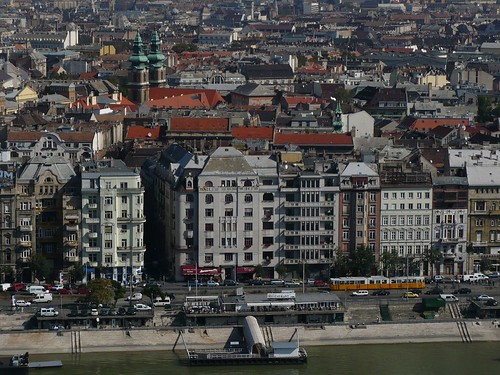

Wednesday, December 19, 2007
Budapest BKV Unloading Old Trams
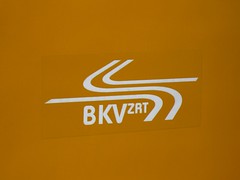
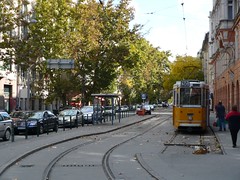
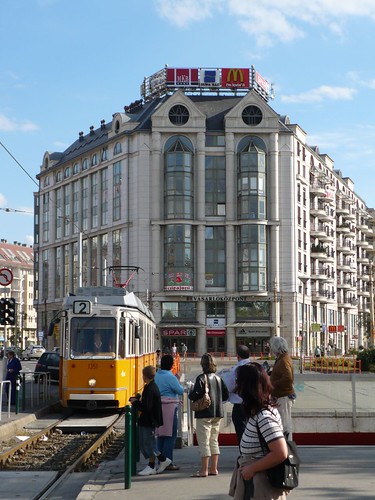
Tuesday, December 18, 2007
Photo Flashback

When I was at the Bellview Station in Denver a few months ago I snapped this photo. Would have been cool if I got an LRV to shadow the sun...perhaps next time. Also, Richard Layman mentioned the Siemens Combino Ultra in a recent post about streetcar vehicles. Here is a photo you all have probably already seen of the Combino Supra in Budapest I took while I was there in October.

Tuesday, October 23, 2007
Tram System Logos
Graz

Budapest
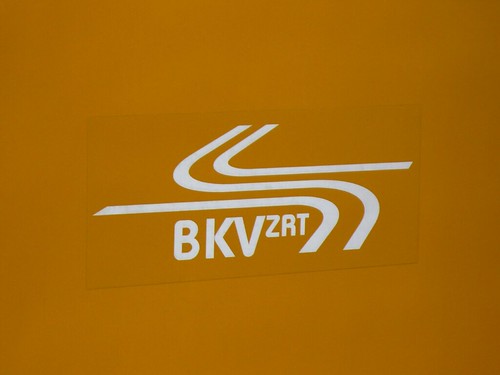
Budapest Metro

Prague Metro
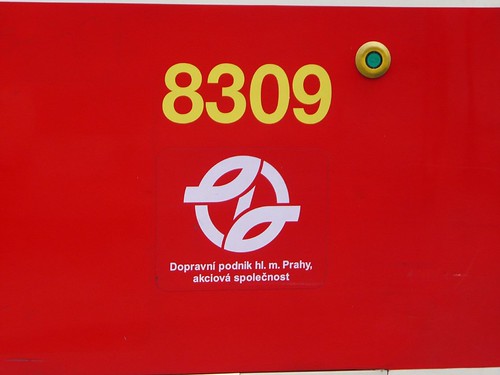
Vienna
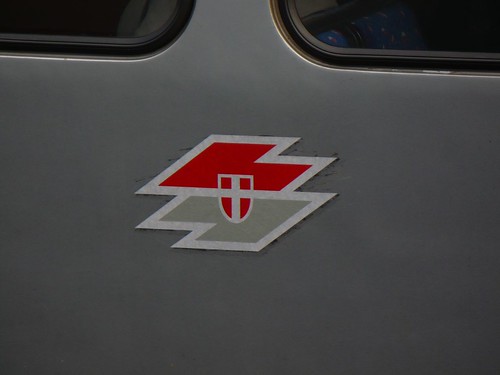
Tuesday, October 16, 2007
Really Freakin Fast
Sunday, October 7, 2007
Ringing the Hub & Spoke
Budapest and the Caterpillars
In Budapest, the ring routes do some heavy crosstown lifting, specifically, the 4 and 6 routes which run on one minute headways and carry 10,000 riders per hour per direction during rush hours (I think there might be more). It seemed at times that the Combino Supras had many more people riding them than the subways with multi-car consists.
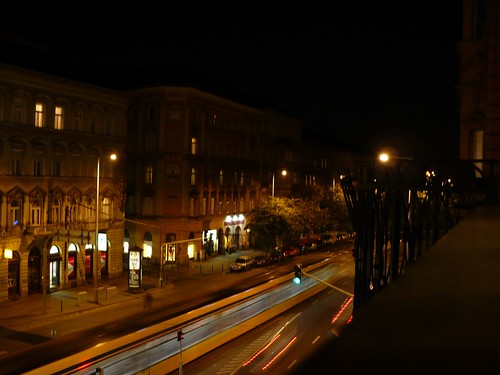
You'll notice in the map below that the subway system operates in the traditional spoke system but if you look closer at the Pest side of the city (That's East since Buda and Pest were initially different cities) there are yellow tram rings that connect the subway stations. The 1,4,6 and 47,49 routes make crosstown connections easy. We stayed on the 4,6 lines and took them to connect with the Metro on many occasions and were always completely packed into the cars, especially in the evenings and even at 9pm at night when students and young folks were out at night.
The benefit of these rings is that with their one minute headways combined with the subway's 3 minute headways, you can get anywhere in the city faster than in a car.

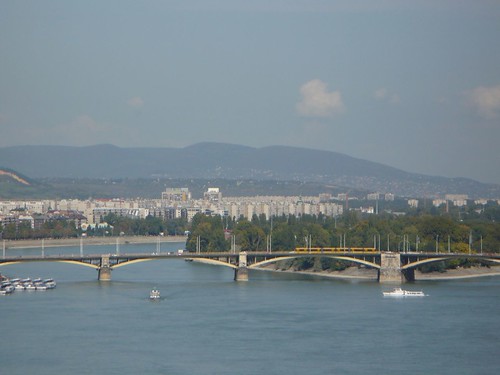
The benefits of these ring routes are many. They are fast ways to get between metro stations as well as distribute people to the places in between. You'll also notice that they connect to the suburban railways as well (in green). There are also two routes that go north and south on the river connecting the top and bottom of the ring. This is where I saw the most tourists.
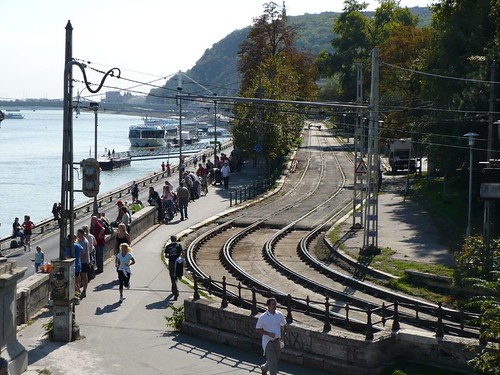
The trams were also designed not for commutes but urban transportation. The interiors were chair sparse and able to fit many more people for short trips.
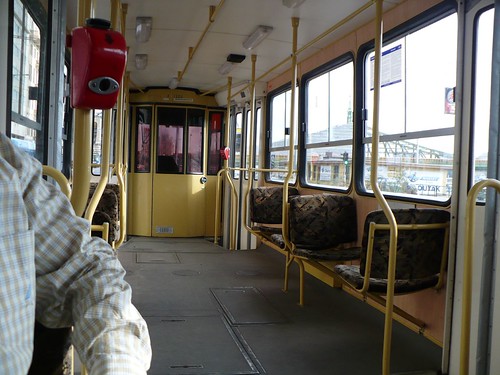

Next i'll talk about Vienna's Ringstrasse and the above and underground tram transfers in the Strassenbahn.
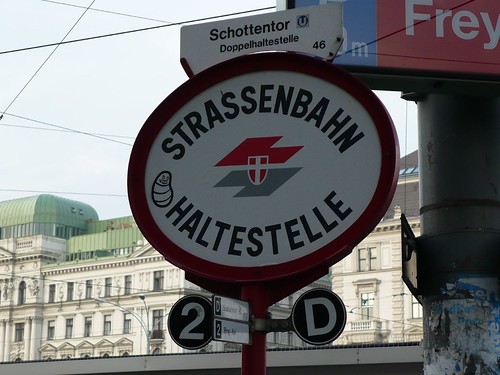
Saturday, October 6, 2007
Trains, Planes, and Funiculars
Vienna Metro
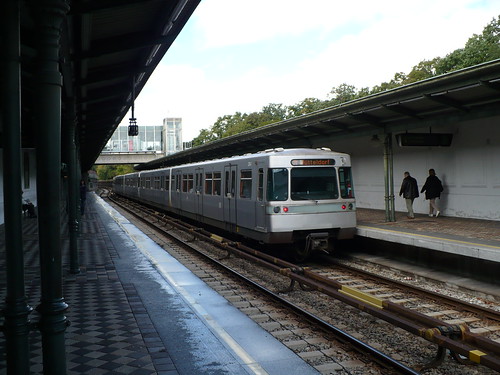
Vienna Tram
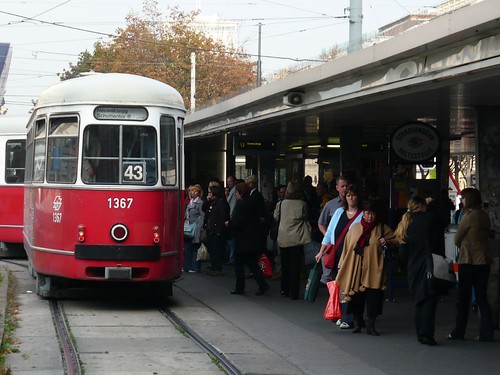
Vienna Modern Tram
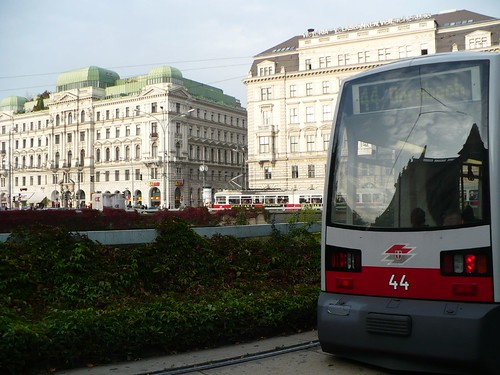
Budapest Metro
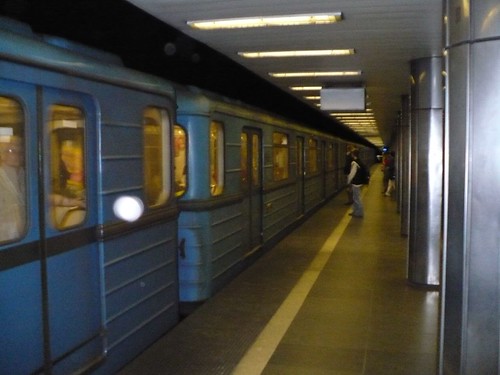
Budapest Metro M1
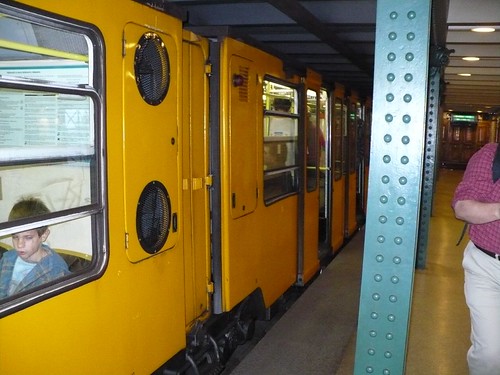
Budapest Tram
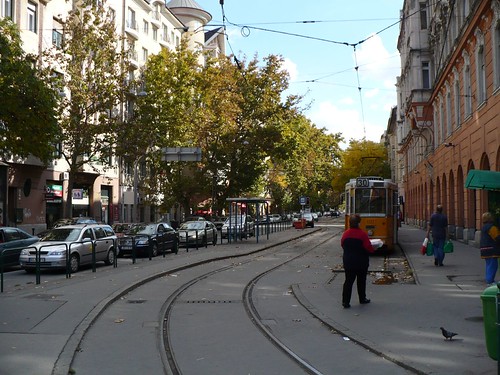
Budapest Tram
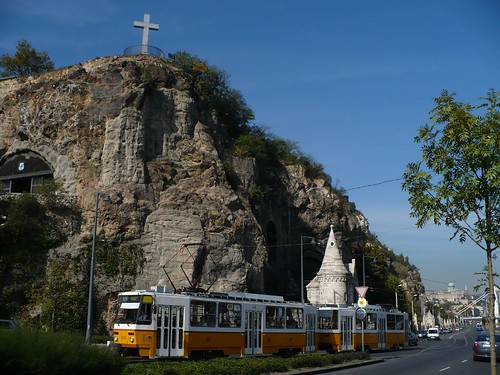
Budapest Combino Supra

Budapest Funicular - Second Oldest in Europe

Budapest Bus
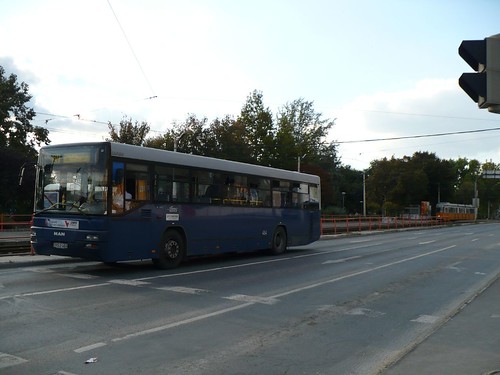
Budapest Trolleybus
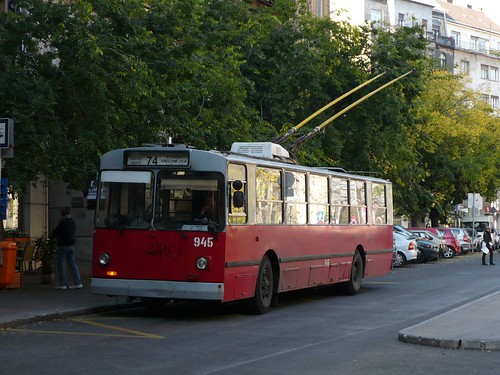
Prague Metro

Prague Tram

